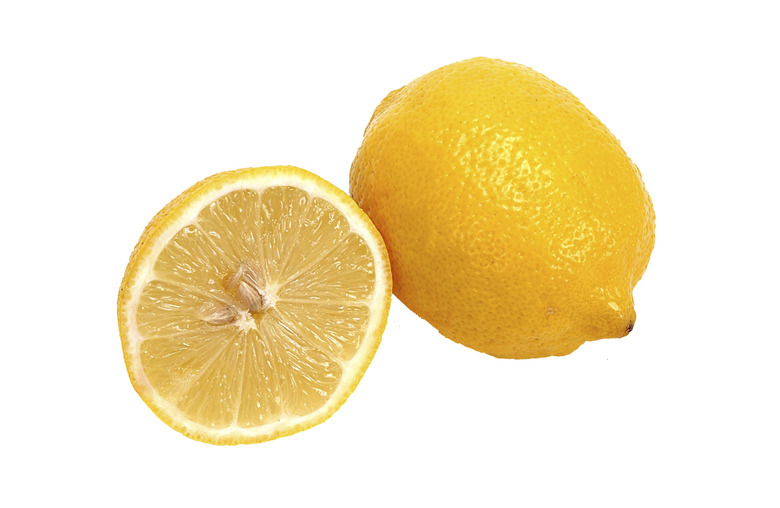Easy & Fast pH Experiments With Litmus
Litmus paper represents an inexpensive supply that is used in nearly all chemistry labs; the paper changes color quickly and vividly, indicating the pH of solutions into which it is dipped. It allows quick tests of acidity and alkalinity for laboratory chemicals as well as foods and household products. Although electronic pH meters deliver more precise results, litmus paper is convenient, practical and well-suited for grade-school experiments as well as university and commercial labs.
Testing Acids
Testing Acids
Into clean cups, pour about 10 to 20 mL of lime juice, lemon juice and vinegar, one liquid to each cup. These liquids are all mild acids. Tear off a few pieces of alkacid litmus paper about an inch in length and dip the end of one piece into each substance so that you test each cup with its own strip. The acetic acid in vinegar has a pH of approximately 3 and turns the paper orange-red. The citric acid in lemon and lime juices has a pH of about 2; at the point of contact, the paper turns a deeper shade of red. The lower the pH, the more red the color becomes.
Testing Bases
Testing Bases
Fill two clean cups halfway with distilled water and mix in a gram or two of sodium bicarbonate in one and a similar amount of borax soap in the other until the powders dissolve. Into a third clean cup, pour 10 to 20 mL of household ammonia. Tear off three pieces of alkacid litmus paper about an inch long and dip them in the liquids, one piece to each cup. The solutions are bases, the strongest of which is the ammonia with a pH of 11; it turns the litmus paper dark blue. The borax is weaker, having a pH of about 9; it turns the paper dark green. The sodium bicarbonate solution's pH is about 8 and it turns the paper green or yellow-green.
Testing Neutral Substances
Testing Neutral Substances
Fill two clean cups halfway with distilled water; mix a gram or two of table salt into one. Tear two inch-long strips of alkacid litmus paper and dip them into the cups, using one strip per cup. Distilled water and saltwater are both neutral, each having a pH of 7. The color of the paper should be yellow.
Monitor Neutralizing Reactions
Monitor Neutralizing Reactions
Prepare two solutions in two clean cups; fill one halfway with lemon juice and the other with distilled water having a few grams of dissolved borax. Using an eye dropper, add a few drops of the borax solution to the lemon juice, then test the solution with a short piece of alkacid litmus paper. Add a few more drops and test the solution repeatedly; lay down each strip next to last one and you will notice the strips turning orange and tan instead of red. You're finished when the strip turns yellow; you have neutralized the acid by gradually adding a base.
Cite This Article
MLA
Papiewski, John. "Easy & Fast pH Experiments With Litmus" sciencing.com, https://www.sciencing.com/easy-fast-ph-experiments-litmus-9291/. 24 April 2017.
APA
Papiewski, John. (2017, April 24). Easy & Fast pH Experiments With Litmus. sciencing.com. Retrieved from https://www.sciencing.com/easy-fast-ph-experiments-litmus-9291/
Chicago
Papiewski, John. Easy & Fast pH Experiments With Litmus last modified August 30, 2022. https://www.sciencing.com/easy-fast-ph-experiments-litmus-9291/
